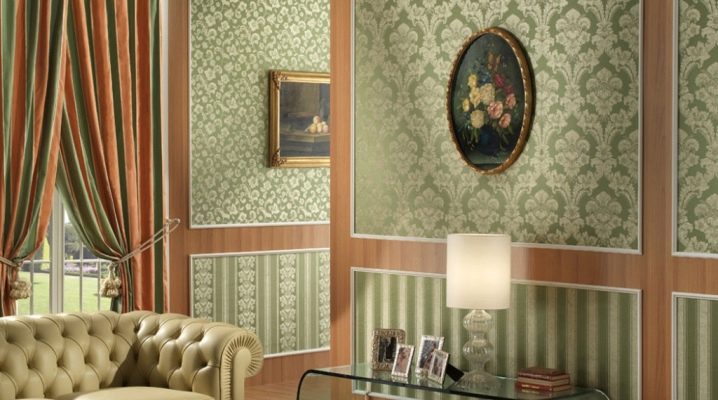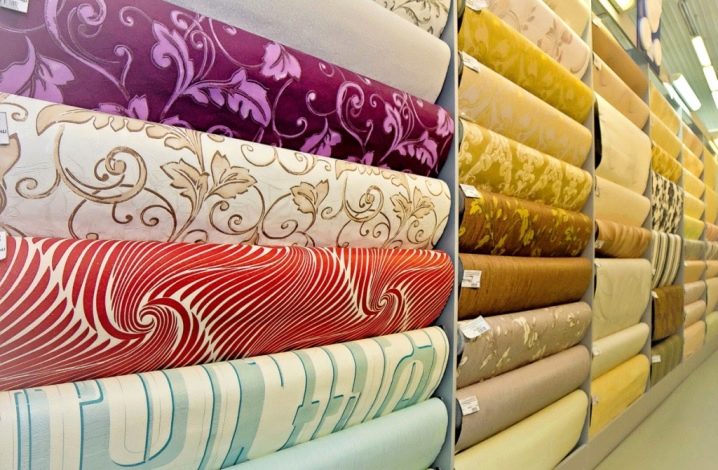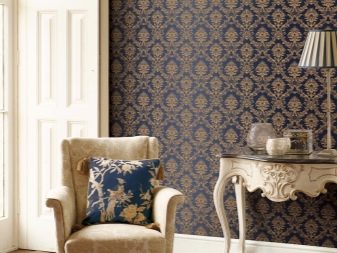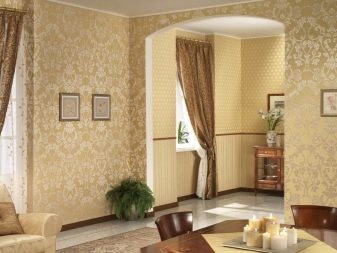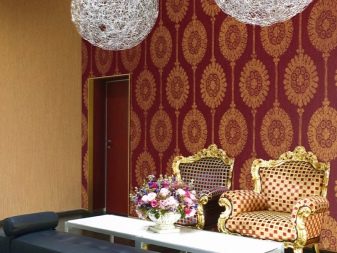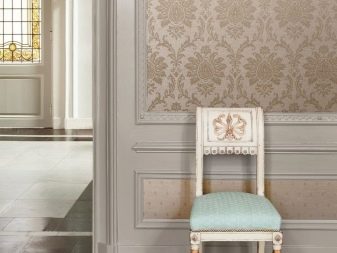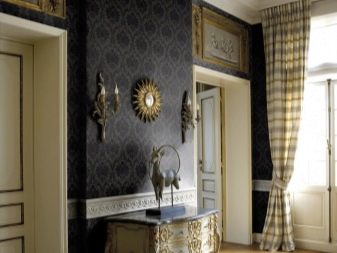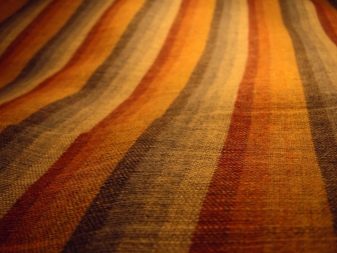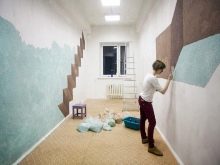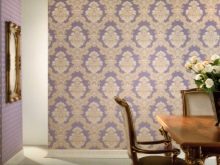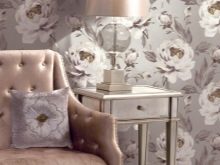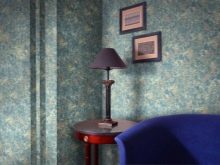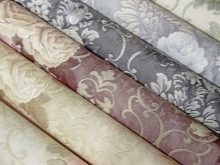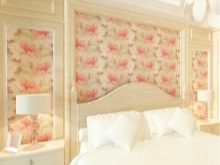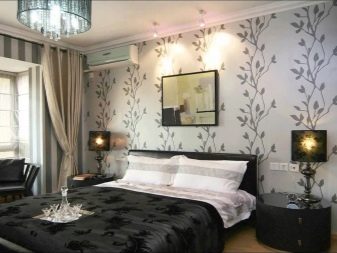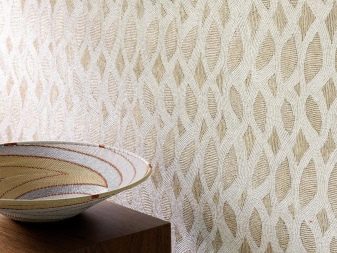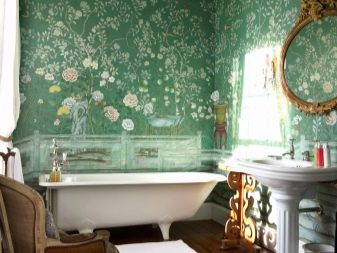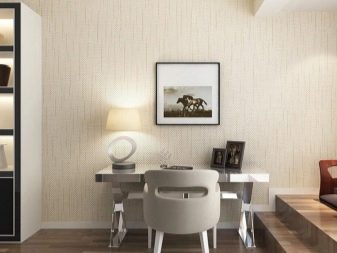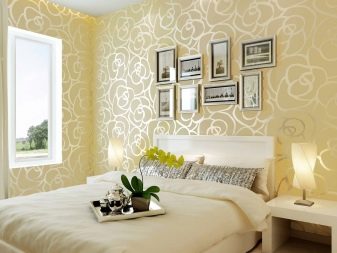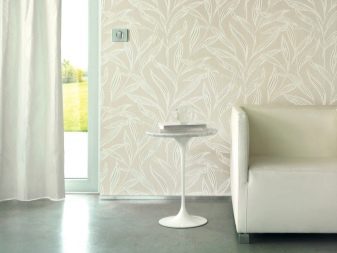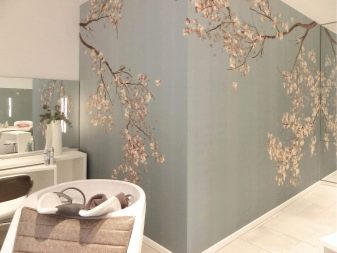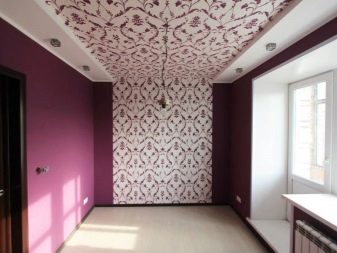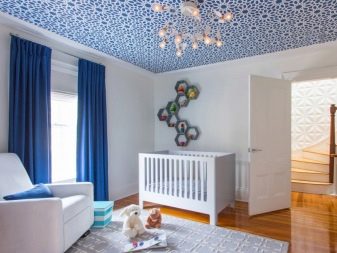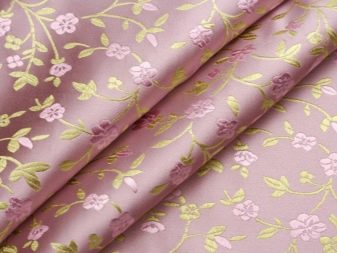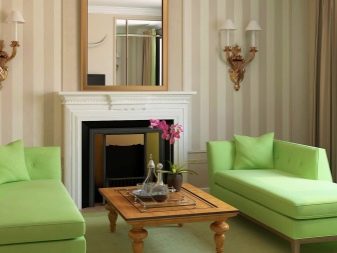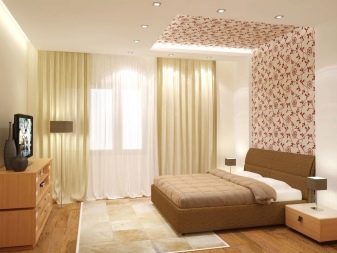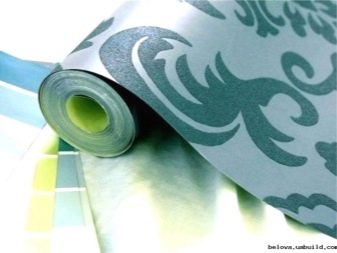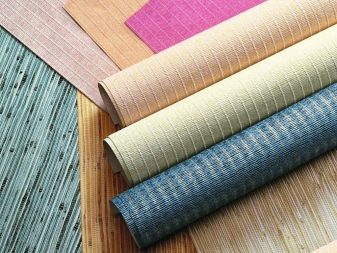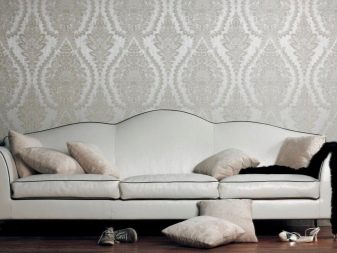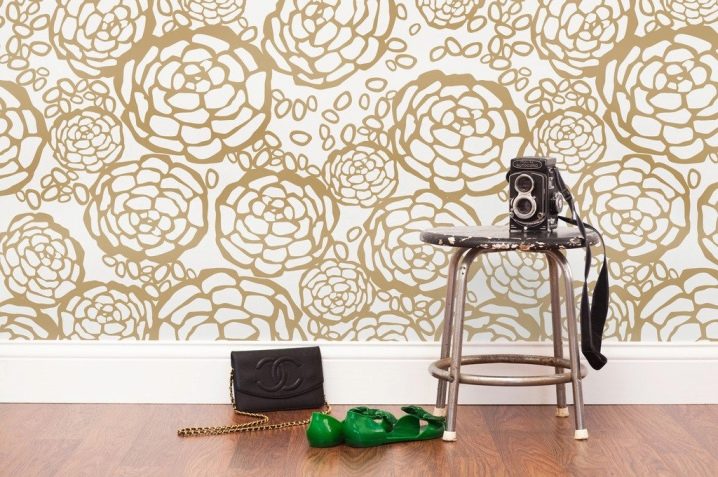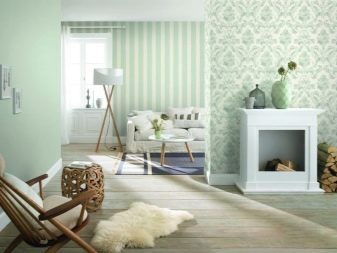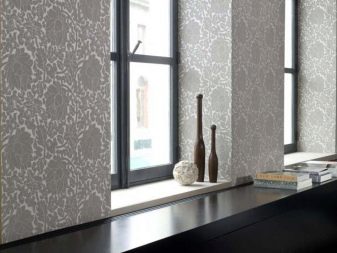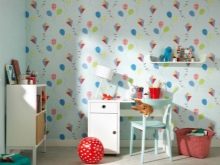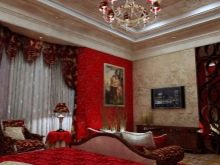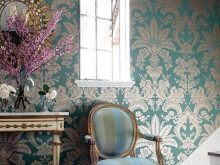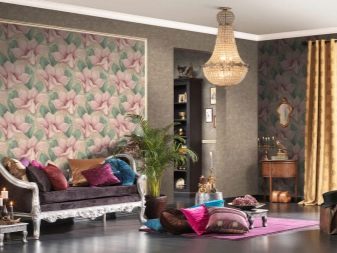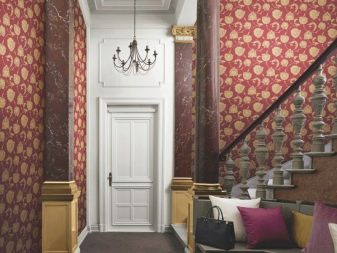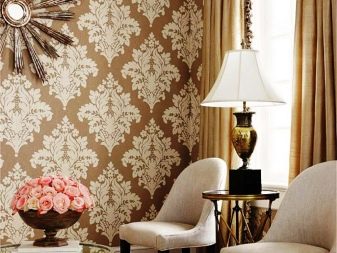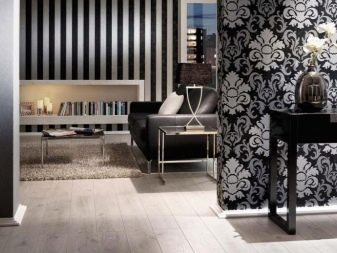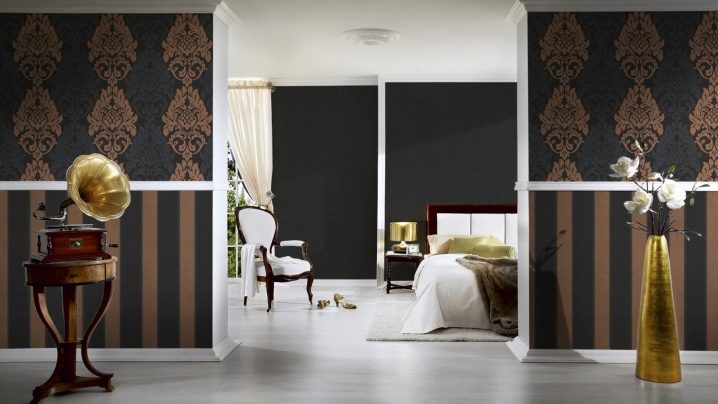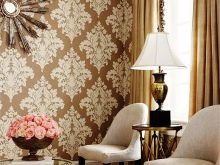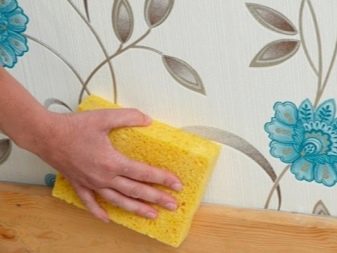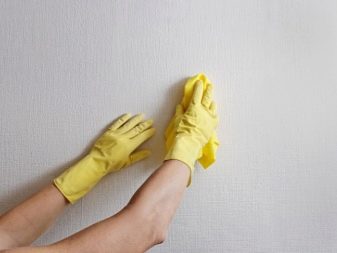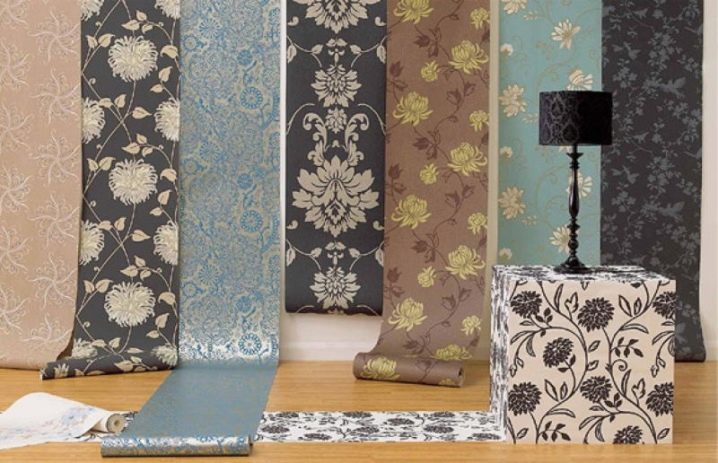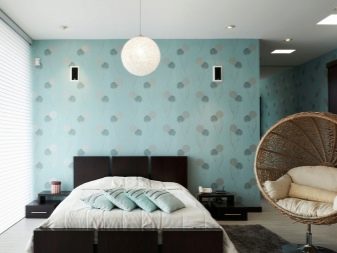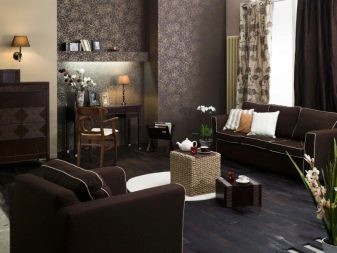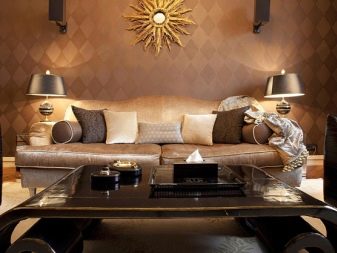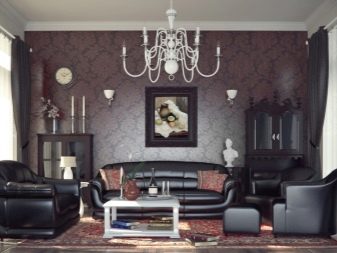Textile wallpaper: features of choice and ideas for the interior
The original fabric base gives textile wallpaper a well-deserved status as an environmentally friendly and attractive finish for any walls. Such products perfectly absorb noise, resistant to sunlight.
What it is?
Wallpapers - one of the most popular types of finishing materials, which has a stylish appearance, low cost and long service life. Textile wallpapers are quite expensive, but in terms of the above two parameters, they are significantly ahead of other popular types of wallpaper.
Advantages and disadvantages
Textile wallpaper is a rather expensive finishing option, but the interior decorated with this method looks impressive.Like other products, wallpapers from textiles have both their advantages and a number of drawbacks, which you should know about before buying.
The main advantages of using these products are as follows.
- Completely safe for health. Non toxic.
- Such wallpaper can accumulate heat and give it back.
- They are a natural sound insulator, as they create protection against various noise stimuli.
- The connecting seams between the strips are almost invisible, which is important for creating a coating integrity effect.
- Such wallpapers look expensive, textiles are in fact used beautiful, which causes respect for the owner of the house, who can buy such a chic decoration for his home.
- Long remain in their original form;
- Textiles quietly makes dry cleaning.
There are downsides to these wallpapers.
- This wallpaper is quickly polluted, "collect" dust.
- They absorb moisture, are afraid of steam and absorb odors. That is why they are not recommended to decorate the walls of kitchens and bathrooms.
- It is almost impossible to put these wallpapers on the wall often without the help of a professional, because the coating is too atypical, even if it is a high-quality imitation of fabric texture.
- High price.
Kinds
Modern wallpaper from textiles are divided into 3 subspecies.
- Liquid;
- Products based on fabric;
- Cloths where textiles are the top layer.
Liquid products are classified as textile wallpaper conditionally, because their composition is not a fabric, but a low percentage of cotton or silk fibers.
The decor on the basis of the fabric - it is a vinyl coating with a substrate of non-woven.
Wallpapers, where the fabric is the top layer, are divided into several types, for example, according to the shape of the base - on paper and foam, on the type of the top layer - on linen or felt, on the width - on products from 90 cm to 3 m (roll - 90- 120 cm, seamless - 280-310 cm).
All sub-types of wallpapers have specific specific features.
- Textile wallpaper based on synthetics. In this material, the paper composition is absent - the top of the canvas is glued to foam rubber. The material will save from cold weather and noise, and care will be easier - this wallpaper is not afraid of a vacuum cleaner.
- Jute products. Jute is a material that can be used to create a top layer of wallpaper. Often ropes are made of it, jute itself has a fiber structure, which can be seen with the naked eye. This structure will hide various imperfections of the walls in the room and will be able to withstand the usual cleaning.
- Silk wallpaper. The main factor here is the feeling of a comfortable touch to the surface, while even the synthetic base does not make this material inexpensive, because it is mainly produced on a separate order.
- Linen wallpaper. They look great, have good characteristics, have an affordable price. For all properties, they look like more expensive jute wallpapers, but do not have such a pronounced fibrous texture, so they cannot hide the unevenness of the surface under them.
- Velor wallpaper. Have a high price due to the peculiarities in production. A thin pile of nylon is neatly applied to the paper base. This coating is the softest, but its main feature is its indispensability in conditions of rather dusty spaces. Dust is not visible in the pile and it can be vacuumed, and then the spots on the surface simply will not remain.
- Felt wallpaper. They are very diverse. Such a product can be produced from real felt and from its substitutes from synthetics (microfiber or polyester). When pasting difficult, but they have all the qualities of a textile material, and they can even be wiped with a damp cloth.It is best to do this very carefully, without the use of chemicals.
- Great demand enjoy vinyl wallpapers or, as they are also called, washable covers. Produced on the basis of paper, nonwoven fabric. The top layer is made of PVC, which is neatly applied to the substrate with the help of printers, and then this layer must be processed using embossing and silvering, followed by applying varnish. Vinyl woven wallpaper is the most durable, they can not actually break.
- Bamboo wallpaper Known for high wear resistance, they are many where used. Natural bamboo stems are attached to the fabric, used in the decoration of walls and furniture. Glued on concrete and brick, well kept on the tree. Not afraid of direct sunlight.
- Recently, the opportunity to purchase original fabric self-adhesive wallpaper. This is predominantly soft matte canvas, attached to the glue base. Before pasting, false material is removed from the canvas, and the line is glued onto a previously prepared surface. This way you can decorate not only walls, but also doors and even some interior items.
These covers are very easily removed if necessary and outweighed in another place. In this case, no marks on the wall, they will not leave.
Each of the above types has certain features, which is why the purchase must take into account not only the decorative qualities of all these products, but also their structural features, environmental properties, and the degree of durability. For ceilings today, it has become very popular to use stretch wallpapers with a textured fabric - an original solution that will appeal to many homeowners.
Also, you should think about whether you will buy already familiar wallpaper rolls or seamless textile wallpaper.
Wallpaper rolls consist of 2 layers - the bottom layer of paper or non-woven fabric and the front layer of textile material. On the basis there is a layer of fabric - cotton, silk, viscose, jute, flax. On top of this surface is treated with special compounds that help repel dust from products.
You will also like seamless wallpaper, which outwardly represents one huge roll of fabric from 295 to 320 cm wide. Such a solid woven coating is applied to the walls,to paste over all the room at once. At the same time there is a single seam that allows you to make the interior more original.
Textile seamless wallpaper is treated with a special impregnation, so that the liquid is not absorbed, but as if rolled down from them.
These wallpapers look very impressive and very expensive.
Types of basics
Today you can find fabric wallpaper based on non-woven, paper and synthetic. Paper and non-woven fabric - the usual details of wall decoration, but such a foundation, like foam rubber, is used not so long ago.
- Textile wallpaper on the usual paper basis - the most common type, since the presence of paper makes the material cheaper to produce, which affects the final price for an ordinary buyer. To stick wallpaper on the basis of paper will have to prepare pieces of a certain length. Glue it is necessary to grease part of the product prepared for pasting and leave it for a couple of minutes for impregnation. After a pre-prepared dry and clean wall is to apply a layer of glue and glue a piece of wallpaper.
- The most expensive are textiles. non-woven base in the form of material in a roll and seamless tapestries.Non-woven base makes the wallpaper light, helps to avoid deformation when working with them. A characteristic feature of such a foundation is that the glue is applied only on the wall. The wallpaper itself is not smeared with adhesive.
- Original textiles with foam base. They hide uneven walls, create a layer of noise and heat insulation. Buying such finishing materials, pay attention to their thickness. It is from 2 to 5 mm. The thicker the base, the higher the insulating characteristics of the coating.
Textile wallpaper can have one seam on the entire perimeter of the room. Such pasting is made according to the principle of working with a wall tapestry - a large solid piece of cloth is simply glued completely inside the room. Apertures under interroom doors and window openings are made out after the termination of all work.
The positive moment of this design is in its relative visual integrity. If the material is cut, as ordinary wallpaper, then it is glued in the usual way.
Colors and design
When choosing colors for your new wallcoverings, you must be very clear about what kind of effect you want to get with their help, and think over,How harmoniously selected textile wallpaper will be combined with furniture and other furnishings in the room for which they are intended.
If you, for example, want to visually reduce the space - buy products with a large catchy pattern.
If this is a small apartment, then it is better to get coverings with a rare alternating pattern or wallpaper of light shades with a minimum number of color patterns.
The color scheme is a special topic for conversation, because any color affects a person differently, and therefore a lot when choosing can depend on what psychological mood in the room you want to create with the help of new wallpapers.
- Red wallpaper in the bedroom will give energy and enthusiasm. But this color is not suitable for kitchens or dining rooms.
- For a nursery, it is worth picking up pastel colors, for a bedroom - warm and beige, refusing rich colors, for example, blue.
- Also, the color options for wallcoverings and their combinations may depend on the overall decor. Combinations of white, black, brown and red tones of varying degrees of saturation are characteristic of oriental interiors.
- Traditional interiors can be created using wallpaper calm colors with the design under the tapestry. Here can be used and darkened accents, but quite a bit.
- If you are decorating a room in the style of modern or minimalism, then you can choose the wallpaper of steel colors.
Brands
The most famous manufacturers of textile coatings are located in Europe. The products of such brands from Italy as Arlin and Sangiorgio are very popular, here you should also mention the French Zuber and Calcutta and Omexco from Belgium.
The stylish appearance of these wallpapers and their excellent quality of performance will give any interior a special originality and exclusivity, and if you wish, you can always choose textile wallpapers for rooms decorated in any style. You will also choose the wallpaper you need on a fabric basis in the collections of such companies as Architects Paper (USA), Sangetsu (Japan), A Fromental, Sanderson (England), KT Exclusive and Rasch (Germany). Not one of your guests will pass over this wall material with their attention, and universal admiration will be a pleasant surprise for you.
How to choose?
When choosing fabric products, you should be familiar with the qualitative characteristics of the materials and the purpose of the premises where they will be used.
So, products made of felt and velor are best purchased for bedrooms, as they accumulate dust and all kinds of smells and are not suitable for the kitchen.
In the kitchen, washable wallpaper based on fabric or special wallpapers that look like fabric only in appearance will look great. For children, self-adhesive wallcoverings are often used in fabric-based rolls for walls, since they can easily be changed in case of damage.
If you need wallpaper for the ceiling, then high-quality textile wallpaper is perfect for this purpose. The advantages of their operation are very significant. Due to the texture, the joints of the canvases will be almost invisible. Textile wallpaper on the ceiling will be able to give a special charm to any room, but you need to choose them only for "clean" rooms, as they get dirty easily.
Care
In order for wallpapers to retain their stylish appearance longer, they need to be properly maintained:
- Frequent cleaning with a vacuum cleaner or soft brush;
- After pasting, process the wallpaper with special antistatic impregnation;
- When new stains appear, it is necessary to wet them with a solution of water and soap, without pressing on the surface and drying the product with an ordinary sheet of paper.
Textiles can transform the look of any home. For a quality repair, you just need to choose the right kind of them in accordance with the purpose of the space. If you follow the recommendations for care, this wallpaper will long please its originality home owners.
Stylish interiors
If you choose velor wall coverings, you can end up with a finish that visually resembles expensive fabric. Textile velor wallpapers look soft, especially if the room has dimmed lighting.
Linen wall coverings in the bedroom look especially comfortable and stylish, turning this place into a real quality recreation area.
Silk wallpapers can be successfully used for re-registration of offices and bedrooms, living rooms and halls of the restaurant.
More interiors with textile wallpaper, see the following video.
